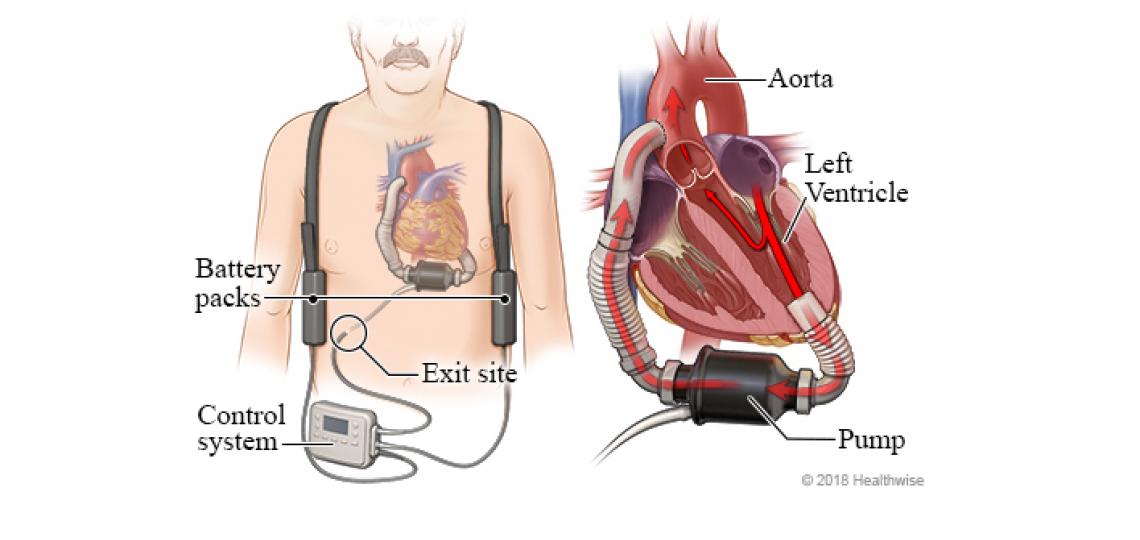What is a ventricular assist device (VAD)?
A ventricular assist device (VAD) helps pump blood from your heart to the rest of your body. It’s used when your heart is not able to pump enough blood on its own.
The device consists of a pump, tubes that connect the pump to the heart, a control system, and a power source. A thin cable connects the pump with the control system. This cable, also called a lead or driveline, comes out of your belly through a small cut in your skin called an exit site.
Your doctor may recommend that you get a VAD if:
You are waiting for a heart transplant.Your heart needs long-term help to pump blood.Your heart is healing from an injury or illness and it needs help until it can pump on its own.
VADs come in different shapes and sizes. You will receive the type of device that works best for your needs.
What are the benefits of using a ventricular assist device (VAD) for heart failure?
A ventricular assist device (VAD) used before a heart transplant can help people live until they receive the transplant.
VADs used for long-term therapy may help lower the risk of death compared to medical treatment alone. And a VAD might help a person feel better and be able to do better with daily activities.
What can you expect after getting a ventricular assist device (VAD)?
Your doctor will give you detailed instructions about how to care for your device. These will include how to care for the exit site, where the cable comes out of your belly.
A team of specialists will help you with your device and your treatment plan. You’ll have regular follow-up visits to check your health and make sure your device is working well.
Most people with a VAD feel better and have a better quality of life. They can be active, be social, and enjoy hobbies.
Having a VAD may cause problems like infection and blood clotting. However, the device can be lifesaving. Your treatment team will help you know what you can do to help prevent problems.
Your doctor may prescribe several medicines for you. You may be taking some of them already. These medicines will treat your heart and help you avoid problems with the device.
Some people decide to turn off the VAD near the end of life. Making this decision can be easier after you, your doctor, and your loved ones have talked about what you can expect from your life now and in the future. When you schedule your next doctor visit, ask if you can have time to talk about your end-of-life wishes.
© 2016-2019 Healthwise, Incorporated.








 Credit
Credit

